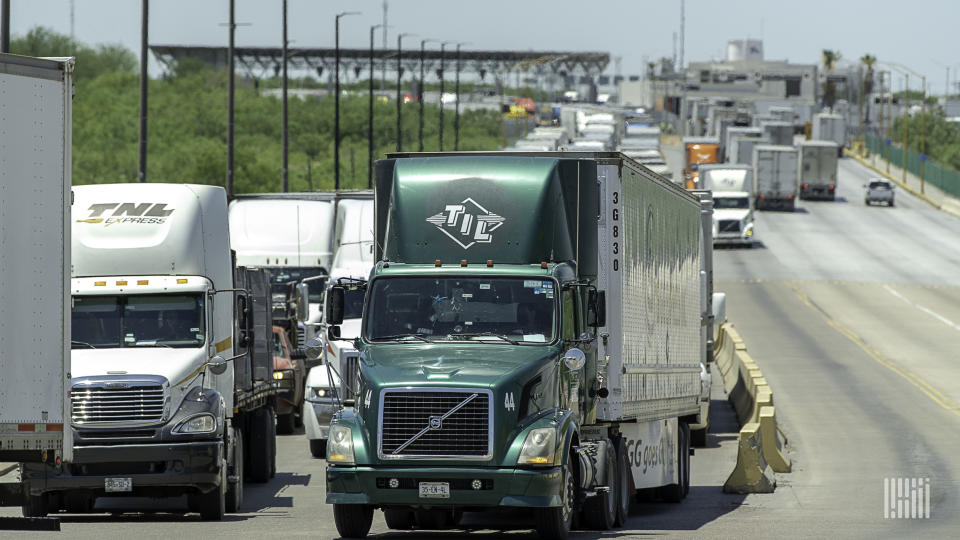

week chart: Outgoing Bid Market Share – Laredo, Phoenix, McAllen, Ontario sonar: OTMS.LRD, OTMS.PHX, OTMS.MFE, OTMS.ONT
Truckload demand outside the Texas frontier markets of Laredo and McAllen has nearly doubled since 2018. Phoenix has seen a similar development boom, becoming a proxy for California’s old warehousing capital in Southern California’s Inland Empire. This changing demand pattern is changing transportation networks and will subsequently affect future pricing structures.
Transport demand patterns continue to show signs of this turns east, even as bid volumes are once again increasing outside of Southern California. The Ontario, California market, which houses a large portion of the warehousing and distribution centers of some of the country’s largest companies, has been losing market share to other regions in terms of overseas freight demand.
the Outgoing bid market share The indices measure the percentage of tenders issued relative to all 135 other markets in the US. The Ontario market accounted for nearly 4% of all freight tenders in July 2018, but has averaged about 3.75% over the past month.
The direction is more important than the current value in this case. Ontario’s market share value hit an all-time low last winter, falling below 3% for the first time in the indices’ history.
Overall demand has declined across the country since early 2022, with California’s share of that demand declining faster than many other assets, especially Phoenix and some Texas markets.
Supply chain diversification strategies help explain this shift in pattern as companies try to move away from single-sourcing practices. This practice hedges companies from extreme fluctuations arising from geopolitical risks, but it can also increase costs.
As companies change their sourcing and logistics networks, they change the way transportation providers will have to conduct their own businesses. Carriers need consistency and balance to keep their costs down.
As demand patterns change, there is upward pressure on rates as carriers determine the reliability of patterns and rebalance their networks. This takes months if not longer to achieve, especially if they are not aware of the ecological transition.

The map above shows which markets have the largest imbalances in the US in terms of freight flows based on FreightWaves Headhaul indicator. Red markets are dense on inbound volumes, while blue markets are dense on outbound shipments. White means it’s more balanced at the moment.
Blue markets tend to carry higher prices because demand naturally exceeds supply. The red markets have some of the cheapest overseas tour prices in the United States

This is what the map looked like in mid-August 2019. Note that the markets bordering Mexico were more inward-centric, meaning they were well-supplied. Note the increased polarization in the Northeast markets as that area has also shifted thanks to a more regional distribution while the darker reds appear to be muted in many areas.
The current market continues to be very well supplied overall with bid rejection rates below 4% (a figure that carriers do not have enough freight to carry). These changing patterns are not very apparent to transportation providers in a weak market. And once the wave of overcapacity recedes, as is expected over the next year, these regions will be more vulnerable to higher outbound transmission costs than they were before the pandemic.
About the week planner
The shipping waves chart of the week is a chart chosen from sonar Provides an interesting data point for describing the state of freight markets. The graph is chosen from thousands of possible graphs sonar To help participants visualize the freight market in real time. Each week, the market expert will post a chart, along with commentary, right on the front page. Then, the week’s chart will be archived on FreightWaves.com for future reference.
SONAR aggregates data from hundreds of sources, presenting the data in graphs and maps and providing feedback on what freight market experts want to know about the industry in real time.
FreightWaves data science and product teams release new datasets every week and enhance the customer experience.
To request a SONAR view, click here.
the post The boom in frontier cities is reorganizing the freight market Debuted charging waves.




